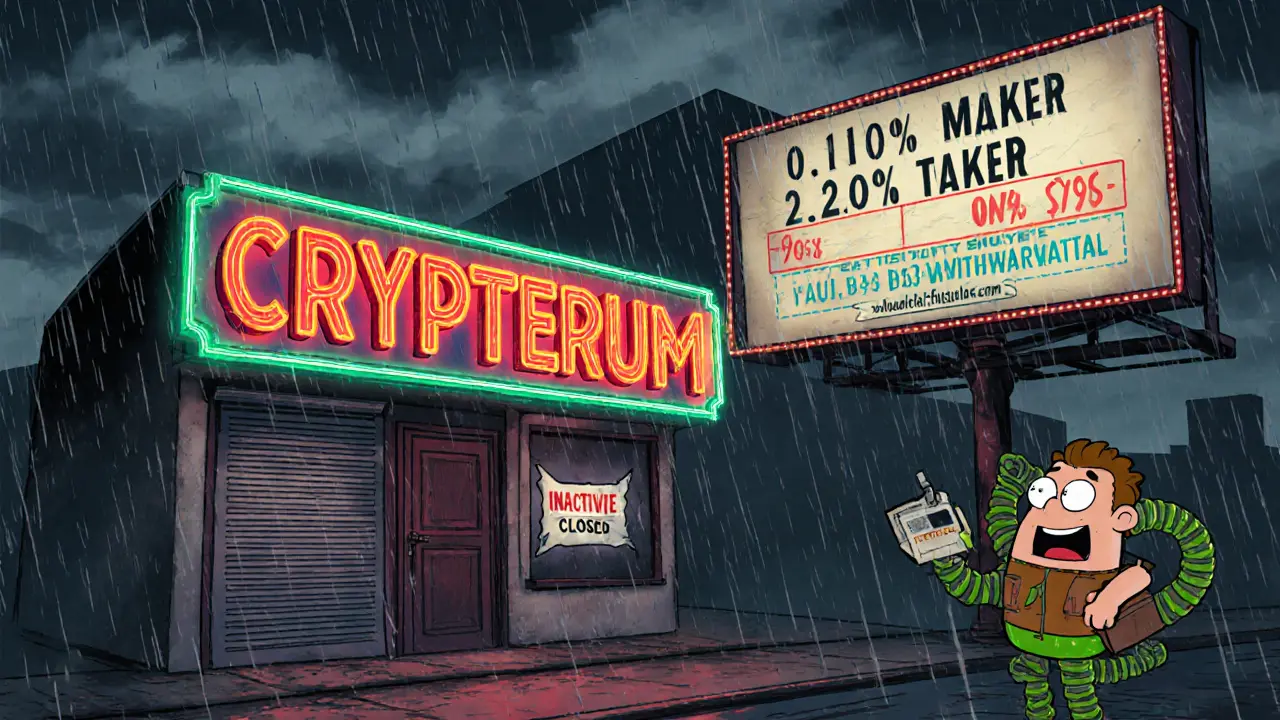Inactive Crypto Exchange
When dealing with inactive crypto exchange, a platform that has stopped trading, withdrawn services, or shows no recent activity. Also known as a dormant exchange, it often raises concerns about fund safety and market relevance. Understanding crypto exchange security, the safeguards that protect user assets and personal data becomes critical because an inactive platform can leave security gaps unchecked. Likewise, exchange fees, the costs tied to withdrawals, deposits, and trading often shift or disappear when a service winds down, affecting how you move money out. Finally, exchange reviews, user‑generated assessments of reliability and performance give clues about whether the platform has truly gone silent or just entered a slow phase.
Spotting an inactive crypto exchange early can save you a lot of headaches. Inactive crypto exchange encompasses halted trading activity, meaning no new orders are matched and price data freezes. It requires thorough security assessment because lingering wallets may lack updated protections, making them attractive to attackers. Exchange reviews influence user decisions on dormant platforms; a sudden drop in review volume often signals trouble. Exchange fees affect the cost of moving assets out of an inactive exchange – some fees are waived, others spike arbitrarily. Meanwhile, airdrop opportunities can disappear when an exchange goes inactive, leaving participants empty‑handed. By linking these entities – security, fees, reviews, and airdrops – you get a complete picture of the risks and steps to take.
What to Look for and How to React
First, check the platform’s communication channels. A silent blog, no social media posts in weeks, and missing support tickets are red flags. Next, verify the status of your assets on‑chain; if you can still see your tokens on a blockchain explorer, you retain control even if the exchange UI is dead. Third, compare withdrawal fees with the latest disclosed rates – a sudden jump often means the exchange is trying to cover hidden costs before shutting down. Fourth, read recent exchange reviews on independent sites; a pattern of “unable to withdraw” or “no customer service” points to inactivity. Finally, scan for pending airdrop announcements; if the exchange was the distribution hub, you’ll need to claim elsewhere or report the loss.
By keeping an eye on these signals, you can react quickly: move your funds to a trusted, active exchange, secure your private keys, and adjust any airdrop plans. Below you’ll find articles that dive deeper into seed phrase safety, detailed exchange reviews, airdrop guides, and regulatory updates that shape why exchanges go inactive in the first place. Use them to build a safe strategy and stay ahead of any platform that might stop working tomorrow.

Crypterum Crypto Exchange Review: Fees, Inactivity, and What It Means for Traders
Caius Merrow Oct, 14 2025 6A comprehensive review of Crypterum crypto exchange, covering its fee structure, inactive status, regulatory concerns, and safer alternatives for traders.
More Detail